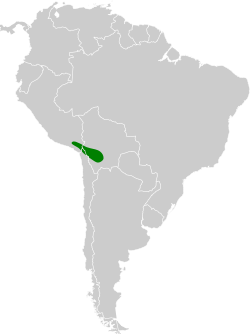| White-throated sierra finch | |
|---|---|
 | |
| Scientific classification | |
| Kingdom: | Animalia |
| Phylum: | Chordata |
| Class: | Aves |
| Order: | Passeriformes |
| Family: | Thraupidae |
| Genus: | Idiopsar |
| Species: | I. erythronotus |
| Binomial name | |
| Idiopsar erythronotus | |
 | |
| Synonyms | |
Phrygilus erythronotus | |
The white-throated sierra finch (Idiopsar erythronotus) is a species of bird in the family Thraupidae.
It is found in Bolivia, Chile, and Peru where its natural habitat is subtropical or tropical high-altitude grassland.
